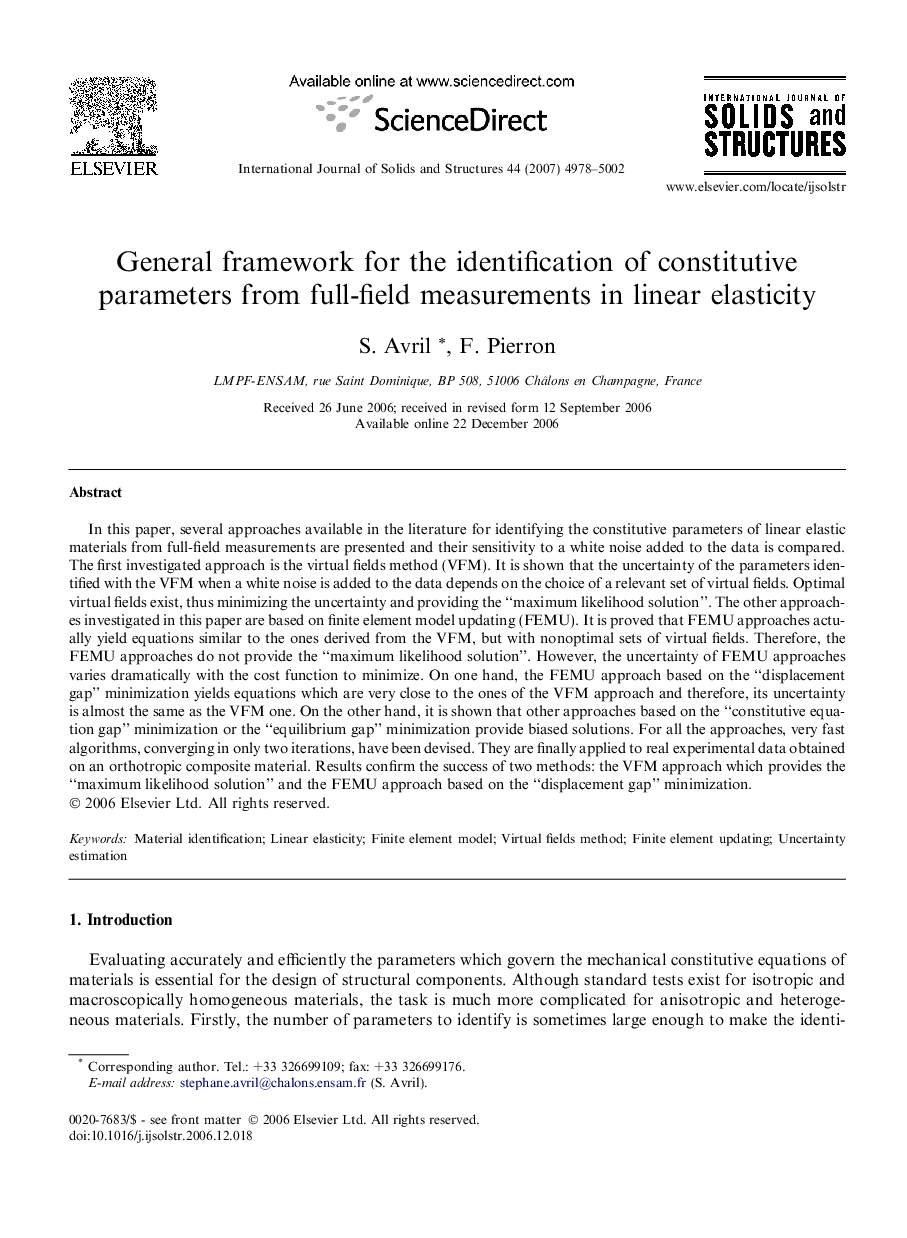| Article ID | Journal | Published Year | Pages | File Type |
|---|---|---|---|---|
| 280613 | International Journal of Solids and Structures | 2007 | 25 Pages |
In this paper, several approaches available in the literature for identifying the constitutive parameters of linear elastic materials from full-field measurements are presented and their sensitivity to a white noise added to the data is compared. The first investigated approach is the virtual fields method (VFM). It is shown that the uncertainty of the parameters identified with the VFM when a white noise is added to the data depends on the choice of a relevant set of virtual fields. Optimal virtual fields exist, thus minimizing the uncertainty and providing the “maximum likelihood solution”. The other approaches investigated in this paper are based on finite element model updating (FEMU). It is proved that FEMU approaches actually yield equations similar to the ones derived from the VFM, but with nonoptimal sets of virtual fields. Therefore, the FEMU approaches do not provide the “maximum likelihood solution”. However, the uncertainty of FEMU approaches varies dramatically with the cost function to minimize. On one hand, the FEMU approach based on the “displacement gap” minimization yields equations which are very close to the ones of the VFM approach and therefore, its uncertainty is almost the same as the VFM one. On the other hand, it is shown that other approaches based on the “constitutive equation gap” minimization or the “equilibrium gap” minimization provide biased solutions. For all the approaches, very fast algorithms, converging in only two iterations, have been devised. They are finally applied to real experimental data obtained on an orthotropic composite material. Results confirm the success of two methods: the VFM approach which provides the “maximum likelihood solution” and the FEMU approach based on the “displacement gap” minimization.
